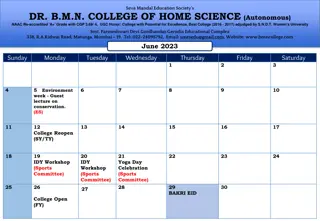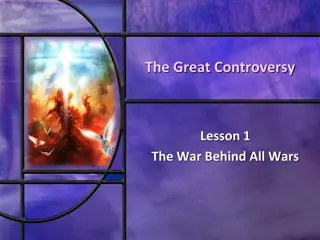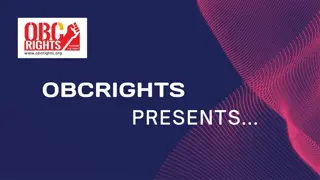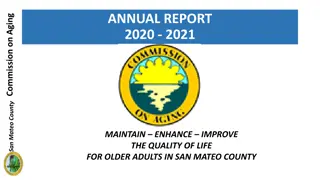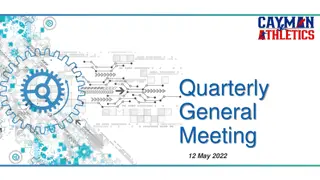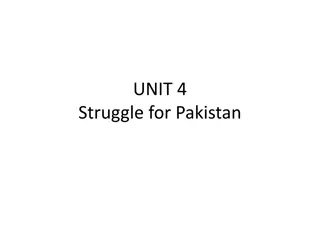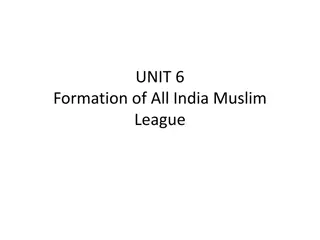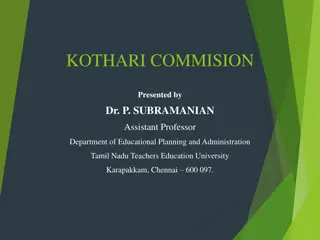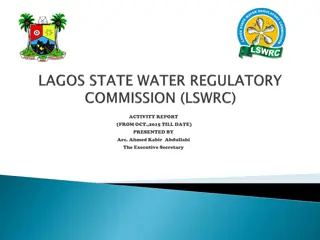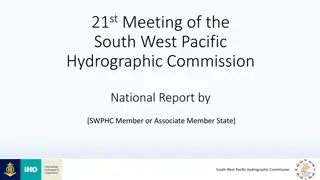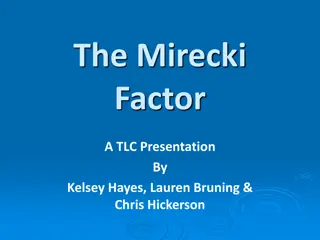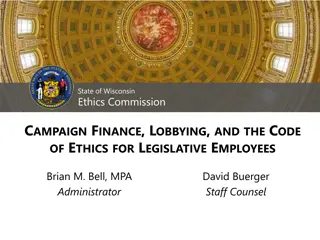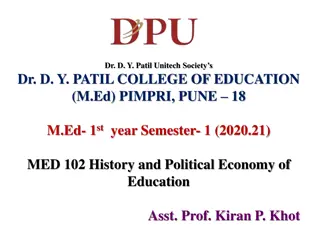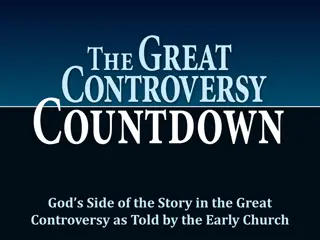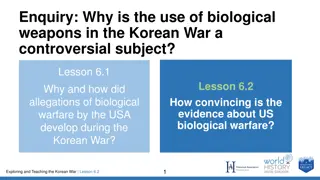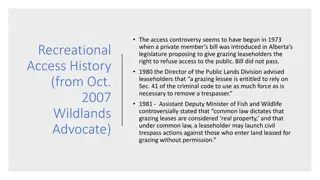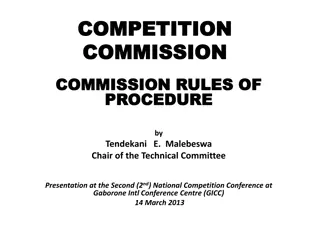Controversy Surrounding the Mandal Commission in India
The Mandal Commission in India recommended job reservations for socially and educationally backward classes, sparking heated debates and protests. Despite support for addressing inequality, opposition arose over concerns of unfairness and impact on national unity. The Supreme Court upheld the reservation policy with modifications, highlighting the complexities of addressing social disparities in a diverse society.
Download Presentation

Please find below an Image/Link to download the presentation.
The content on the website is provided AS IS for your information and personal use only. It may not be sold, licensed, or shared on other websites without obtaining consent from the author.If you encounter any issues during the download, it is possible that the publisher has removed the file from their server.
You are allowed to download the files provided on this website for personal or commercial use, subject to the condition that they are used lawfully. All files are the property of their respective owners.
The content on the website is provided AS IS for your information and personal use only. It may not be sold, licensed, or shared on other websites without obtaining consent from the author.
E N D
Presentation Transcript
Major Topics Office Memorandum Mandal Commission Oppositions against the Mandal Commisiion Political Institutions 1. Parliament- Two Houses of Parliament 2. Executive- Permanent and Political Executive Prime Minister and Cabinet Ministers Power- Prime minister/ President 3. Judiciary- Supreme Court and High Court
Office Memorandum A communication issued by an appropriate authority stating the policy or decision of the government. The government issues hundred of orders every day on different matters. An Office memorandum was the culmination of a long chain of events.
Mandal Commission The government of India had appointed the Second Backward Classes Commission in 1979. It was headed by B.P. Mandal, so it is popularly called the Mandal Commission. It was asked to determine the criteria to identify the socially and educationally backward classes in India and recommended steps to be taken for their advancement The commission gave its report in 1980 and made many recommendations. One of these was 27% of government jobs be reserved for the socially and educationally backward classes.
The benefit of job reservation extended from SC to ST to a third category called SEBC introduced These reports and recommendations were discussed in the parliament Many parties and parliamentarians kept demanding for the implementation of the demands. 1989 Lok Sabhaelection, the Janata Dal party promised that if they will get a chance to form the government they would implement the demands. Janata Dal formed the government and its leader V.P.Singh became the prime minister and took different measures for to implement the commission report. Finally, it was implemented official memorandum- O.M.No. 36012/31/90 was born on April 13, 1990
Reactions of the people It was most hotly debated issue in the country. Newspapers and Magazines were full of different views and opinions related with this issue. It led protests, counter protests, some of became violent It affected the thousands of job opportunities. Some felt that because of the inequality the reservation is very important, through this those communities can reach at the top of the society. Others felt that it would make inequality in opportunity. They would be denied jobs even though they could be more qualified
Some of them considered that it would make hamper in the national unity Some persons and associations opposed this and filed the case in the courts. The supreme court of India bunched all these case together. This case was known as Indira Sawhney and others Vs Union of India case. Eleven judges of Supreme Court heard the arguments of both sides By a majority the judges in 1992 declared that this order of the government was valid and asked the government to modify its original order. It said that well- to- do person from the backward class should be excluded from getting reservation. The Department of Personal Training issued another Office Memorandum on September 8, 1993.
What do you meant by Political Institutions In India the political institutions are arranging and carrying all the tasks of the country. In modern democracy these arrangements are known as Institutions. Working with institutions are not easy, it has lot of rules and regulations. This can bind the hands of the leaders. Institutions involve meetings, committees and routines. This often leads to delay and complications Some of the delays and complications are very useful. They provide an opportunity for a wider set of people to be consulted in any decision.
In India these are the three important Political Institutions Legislature/Parliament-It is the final authority for making laws in the country. Political Executive- The prime minister and the cabinet ministers that take all important policy decisions and Permanent Executive- The Civil Servants, working together, are responsible for taking steps to implement the minister's decision. Judiciary- Supreme Court is an institution where disputes between citizens and the government are finally settled.
Parliament & Legislature Parliament: In all democracies, an assembly of elected representatives exercise supreme political authority on behalf of people. In India such as such as national assembly called Parliament. Legislature: The body of elected representatives at the state level is called Legislature or Legislative assembly. The name may vary in different countries, but such an assembly exists in every democracy
What are the significance of Parliament in democracy? The parliament exercises political authority on behalf of the people in many ways: Parliament is the final authority for making law in any country. It can also change existing laws or abolish existing laws and make new ones in their place. 2. Parliament exercises control over those who run the government. No decision can be taken without the support of the parliament 3. Parliament also control the money matters. 4. Parliament is the highest forum of discussion and debate on public issues and national policy in any country. It can seek information about any matter. 1.
Different houses of Parliament Parliament plays a central role in democracies The large countries divide the role and powers of the parliament in two parts. They are called Chambers or Houses One house is usually directly elected by the people and exercises the real power. The second house , elected indirectly and perform some special functions. They were looking the interest of various states, regions and federal units. In India, the parliament consists of two houses- Rajya Sabha (Council of States) and Lok Sabha (House of the paople) The president of India is a part of the parliament, although she is not a member of either houses
Discuss- parliament and its two houses In all democracies, an assembly of elected representatives exercises supreme political authority on behalf of the people. In India, such a national assembly of elected representatives is called parliament. At the state level it is called Legislature or Legislative Assembly The parliament is the final authority for making laws in any country. It can also change existing laws, or abolish existing laws and make new ones in their place. The parliament exercises control over those who run the government. No decision can be taken without the support of the parliament. Parliament also controls money matters. It is the highest forum of discussion and debate on public issues and national policy in any country.
The parliament is divided in to two The Houses of People (Lok Sabha) It is directly elected by the people and exercises the real power. The maximum strength of the house is 552 of 530 members are elected from the states and 20 members from the Union Territories. The present membership of Lok Sabha is 545.
The Council of States (Rajya Sabha) Is usually elected indirectly and performs some special functions The most common work for the second House is to look after the interests of various states, regions or federal units. It has not more than 250 members Twelve of Rajya Sabha members are nominated by the president from persons who have earned distinction in the field of literature, art, science service. Rajya Sabha is a permanent body. One third of the members retire every two years. At present 245 members in Rajya Sabha, distributed among different states and union territories
Distinguish between- Lok Sabha & Rajya Sabha Lok Sabha Rajya Sabha Members of Lok Sabha are directly elected by the eligible voters The period of Lok Sabha is five years The maximum strength 552 members Money bills can only be introduced in the Lok Sabha. It grants the money for running the administration of the country More powerful than Rajya Sabha Members of Rajya Sabha are elected by the elected members of state legislative assembly It is a permanent body, one third of its member retire every two years It has not more than 250 membres The Rajya Sabha does not exercise much power over money bills. Less powerful than the Lok Sabha
Distinguish between Political Executive and Permanent Executive The different levels of government, the functionaries takes the day to day decision but do not exercise supreme power on behalf of the people. These functionaries are called executive, because they are in charge of the execution of the policies of the government In democratic country, executive that is elected by the people for a specific period is called the Political Executive Eg: Political Leaders People who are appointed on a long term basis are called the Permanent Executive or Civil Sevants Eg: IAS, IPS, Government officers etc
Political Executive Permanent Executives Executives who are elected by the people for a specific period are called Political Executives. Example- Political leaders like the Prime minister, Council of Ministers They remain in office only so long as they command the confidence of the majority of members of the parliament They are answerable to people for all the consequences of their decisions They are more powerful. They take all the final decision The permanent executives are salaried with civil servants who are appointed on a long term. Persons working in civil services. Example: IAS, IPS and IFS They remain in office even when the ruling party changes. Their tenure of the office is fixed. They are not answerable to the people. They are less powerful. They do not take decisions. Instead they assist political executives in carrying out day- to- day administration.
Appointments made by the President of India He/Sheappoints the Chief Justice of India, the judges of the Supreme Court and the High Courts of the states. 1. 2. He appoints the Prime Minister of India and other ministers on the advice of the Prime Minister. He appoints the Governors of the States. 3. He appoints the Election Commissioners and Ambassadors to other countries
Different types of Council of Ministers Council of ministers is the official name for the body that includes all the Ministers. It usually has 60 to 80 Ministers of different tasks Cabinet Ministers: Usually top level leaders of the ruling party, who are in charge of the major ministries. Usually the Cabinet Ministers meet to take decisions in the name of the council of Ministers. Cabinet is thus the inner ring of the Council of Ministers. It comprises about 20 ministers.
2. Ministers of State with Independent Charge: are usually in charge of smaller ministries. They participate in the cabinet meetings only when specially invited. 3. Ministers of State: Are attached to and required to assist cabinet Ministers. 4. Deputy Ministers: They are like Ministers of state but junior to them. The cabinet works as a team. No minister can openly criticise any decision of the government, even if it is about another ministry or Department. Every Ministries has secretaries, who are Civil Servants. The secretaries provide the necessary background information to the ministers to take decisions.
Powers of the Prime Minister The Prime Minister is the most important political institution in the country. The President appoints the Prime Minister. The Prime Minister does not have a fixed tenure. He continues in power so long as remains the leader of the majority party or coalition He chairs Cabinet meetings. 2. He coordinates the works of different departments. 3. His decision are final in case disagreements arise between departments. 4. He exercises general supervision of different ministries. 5. All ministers work under his leadership. 1.
6. The Prime Minister distributes and redistributes work to the ministers. 7. He has the power to dismiss ministers. 8. When the Prime Minister quits, the entire ministry quits. Thus, if the cabinet is the most powerful institution in India, within the cabinet it is the Prime Minister who is the most powerful.
Coalition Government imposed certain constrains on the power of the Prime Minister The prime Minister of the Coalition government cannot take decision as he likes. 1. 2. He has to accommodate different groups and factions in his party as well as among alliance partners. 3. He also has to heed to the views and positions of the coalitions partners and other parties, on whose support the survival of the government depends.
Election procedure of the President of India The President of India not elected directly by the people. All the elected members of Parliament (MP) and members of Assemblies (MLA) elect him. A candidate standing for the post of President has to get majority of votes to win the election. This ensures that the President of India can be seen to represent the entire nation
Powers of the President of India The President of India is the head of the State. 1. 2. He exercises only nominal powers. He is like the queen of Britain whose functions are to a large extent ceremonial. 3. The President supervises the overall functioning of all the political institutions. 4. All government activities take place in the name of the President 5. All laws and major policy decision of the government are issued in his/her name
6. All major appointments are made in the name of the President. These includes the appointment of the Chief Justice of India, the Judges of the Supreme Court and the High Courts, the Governors of the States, the Election Commissioners, ambassadors to other countries etc.. 7. All international treaties and agreements are made in the name of the president. 8. The President is the Supreme Commander of the defence forces of India
Limitation of the Power of President The President is the head of the State and not the head of the government. Therefore, he exercises only nominal powers and that too on the advice of the council of ministers. 2. The President can ask the Council of Ministers to reconsider its advice. But if the same advice is given again, he/she is bound to act according to it. 3. A bill passed by the Parliament becomes a law only after the President gives assent to it. If the President wants, he/she can delay this for some time and send the bill back to the Parliament for reconsideration. But if the Parliament passes the bill again, he/ she to sign it 1.
American Presidential System Difference- Presidential and Parliamentary System The President of the United States is the head of the State and the Government He is directly elected by the people He personally choose and appoint the ministers The legislature (Congress) making the law, but the president can veto any law The President does not need the support of the majority of the members and he is not answerable to them. He has a fixed period of four years and competes it even if his party does not have a majority in the Congress This model followed in most of the Latin America and many of the ex- Soviet Union countries Given the centrality of the President, this system is called Presidential form of Government But in India that follow British model, the parliament is Supreme and this system is called Parliamentary System of Government
When and how does the President exercise his discretion? When a party or coalition of parties gets a clear majority in the elections, the President has to appoint the leader of the majority party or the coalition that enjoys majority support in the Lok Sabha When no party or Coalition gets a majority in the Lok sabha, the President exercise his discretion The President appoints a leader who in his opinion can muster majority support in the Lok Sabha. In such case, the President can ask the newly appointed to prove majority in the Lok Sabha within a specified time
Meaning of Judiciary All the courts at different levels in the Country are collectively called the Judiciary. It is independent and powerful institution and is considered essential for democracies. The Indian Judiciary consists of a Supreme Court for the entire nation, High Court in the States, District Courts and the Courts at local level The judiciary in India is also one of the most powerful in the World.
Powers of Judiciary The Judiciary in India is one of the most powerful judiciary in the World. India has an integrated Judiciary. It means the Supreme Court controls the judicial administration in the country Settle the Disputes 1. Between the Citizens Between citizen and government Between two or more state Between government at the union and state level 2. Free from legislature and Executive The judges do not act on the direction of the government or according to the wishes of the party in power
That is why all the modern democracies have courts that are independent of the legislature and the executive. 3. Interpret the Constitution of the Country The Supreme court and the High court have the power to interpret the Constitution of the country 4. Judicial Review They can declare invalid any law of the legislature or the actions of the executive, whether at the Union level or at the State level, if they find such a law or action is against the Constitution. Thus they can determine the Constitutional validity of any legislation or action of the executive in the country, when it is challenged before them. This is known as Judicial review. If the court finds that a law or an order of the executive disobeys the provisions of the constitution, it declares such law or order null and void.
5. Guardian of Fundamental Rights The powers and the independence of the Indian judiciary allow it to act as the guardian of the Fundamental rights. That is why, the judiciary enjoys a high level of confidence among the people. 6. Public Interest Litigation Any one can approach the courts if public interest is hurt by the actions of the government. 7. Prevent the misuse of government power The courts intervene to prevent the misuse of the government s power to make decisions. They check malpractices on the part of the public officials. That s why the judiciary enjoys a high level of confidence among the people.
Appointment & Removal Judges The judges of the S C and H C are appointed by the President in consultation with the Chief Justice of the Supreme Court. The Senior most judge of the Supreme Court is usually appointed the Chief Justice Once a person is appointed as judge of the S C or H C it is nearly impossible to remove him or her from that position A judge can be removed only by an impeachment motion passed separately by two thirds members of the two houses of the parliament It has never happened in the history of Indian democracy
Any Question? Thank you for your kind attention and valuable additions!



